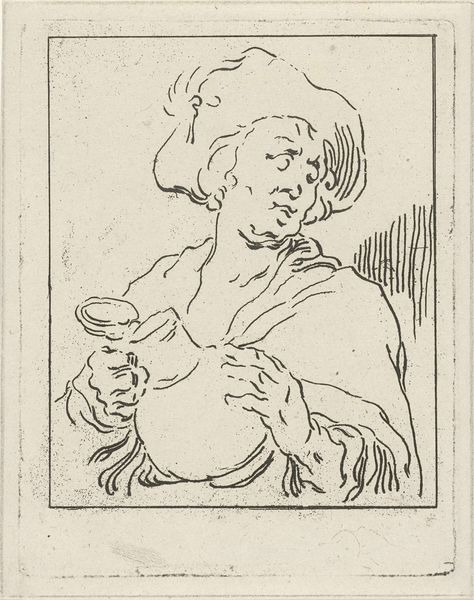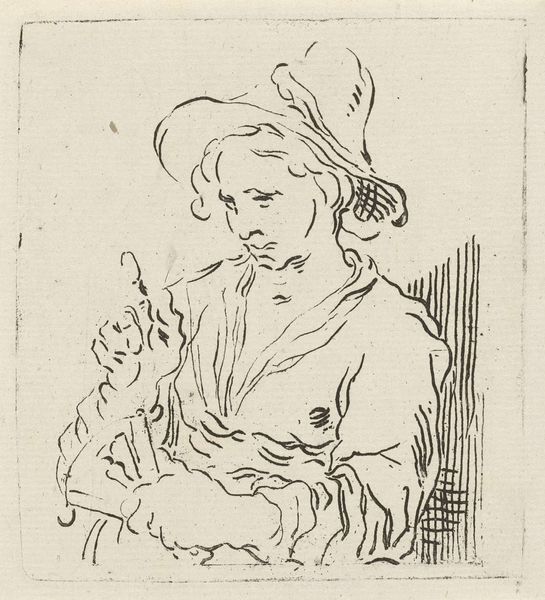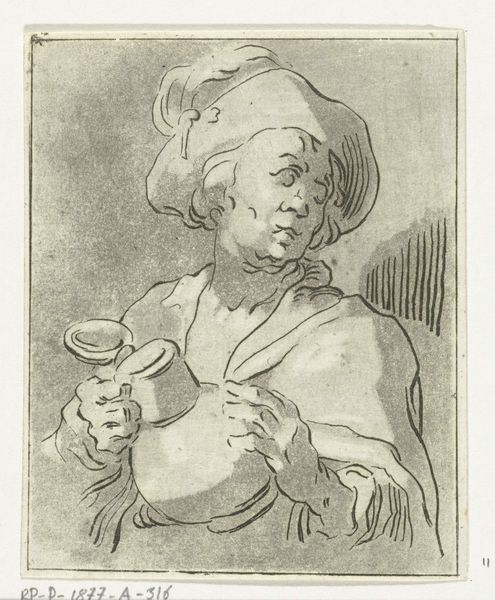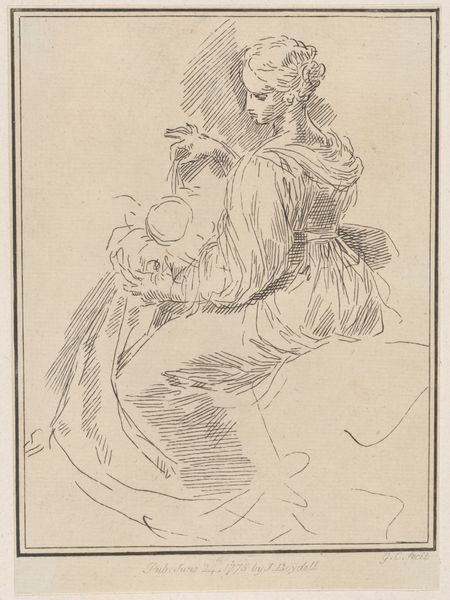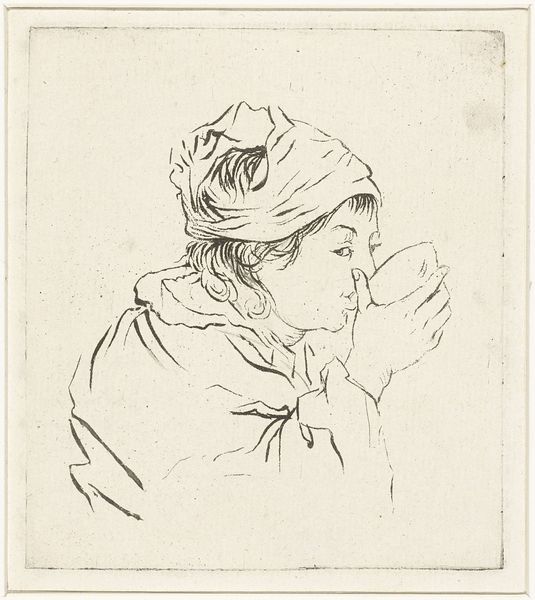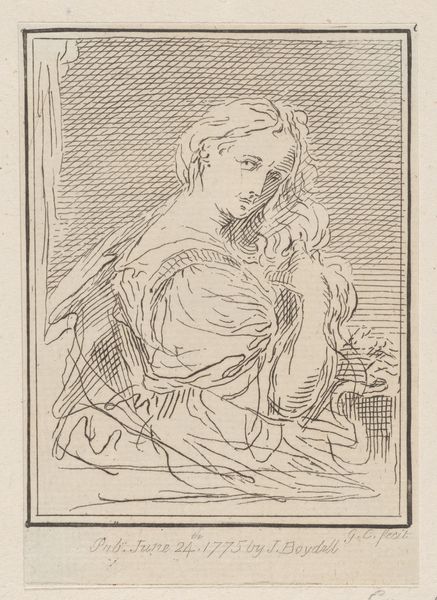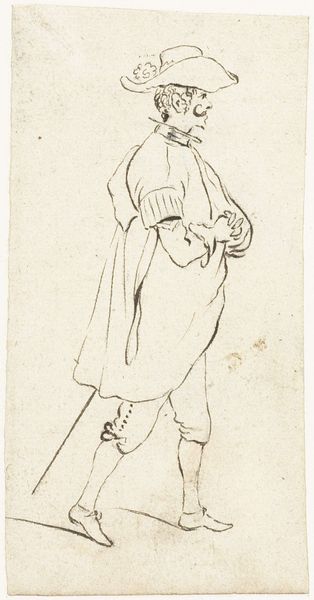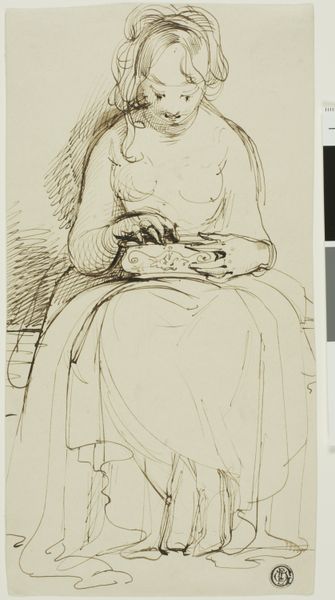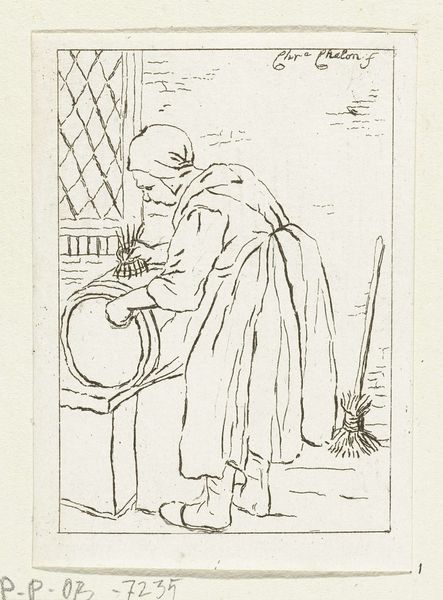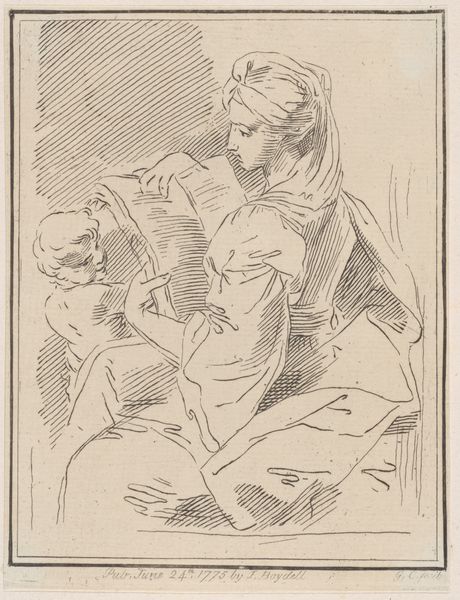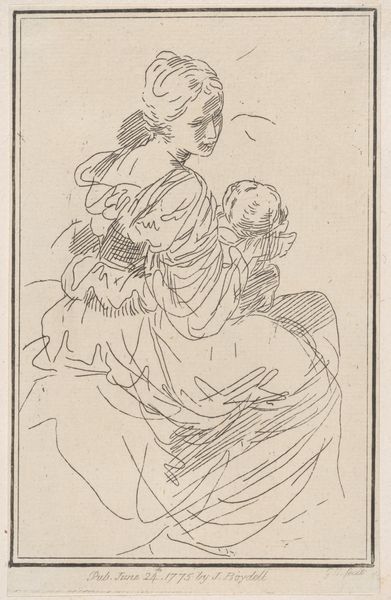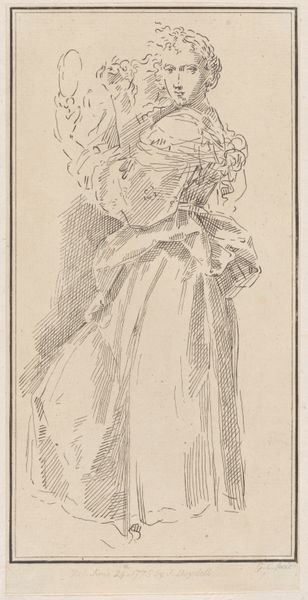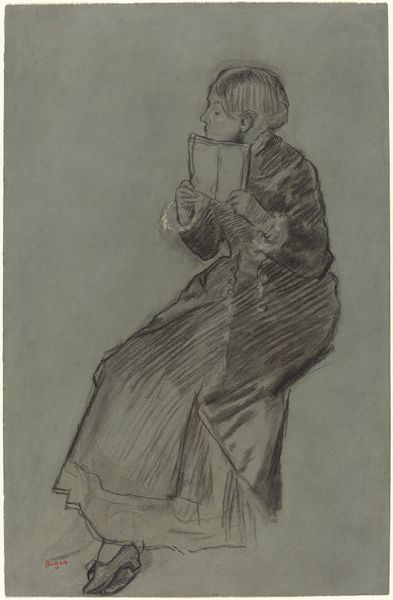
drawing, ink
#
portrait
#
drawing
#
ink
#
romanticism
#
genre-painting
Dimensions: height 115 mm, width 93 mm
Copyright: Rijks Museum: Open Domain
Curator: Ah, a fellow wanderer in the halls of emotion! Looking at this drawing "Man met kruik," or "Man with Jug," from sometime between 1778 and 1838, I'm immediately struck by the raw simplicity of it. The artist, Anthonie van den Bos, used ink to sketch something so wonderfully human. It feels almost like a captured fleeting thought, a casual yet profound observation. Editor: My first impression is that he seems trapped in a perpetual in-between space, isn't it? Suspended with his vessel and melancholic gaze, between worlds. The lines remind me of the marks left behind from hurried excavation work. As if the figure's archetypes are dug from soft stone and clay to unveil stories lost, yet familiar. Curator: Oh, I love that take! The lines do feel archaeological, hinting at layers beneath the surface. But to me, the jug isn't just an object. It's an extension of him, holding not water, but maybe dreams, sorrows, memories... The slight awkwardness of his posture suggests the weight he carries isn't just physical. He is romanticism encapsulated! Editor: Indeed, jugs, vessels, have historically been imbued with profound symbolic resonance, transcending their utilitarian purpose as mere containers of water. Consider their repeated appearance across cultures, religious texts, and artistic renderings—bearers of abundance, provision, hope, sometimes even life itself. Perhaps Van den Bos sought to remind us that we, too, are vessels, containers for something more profound within. The contents of this vessel remains enigmatic, and perhaps rightly so, so that we fill its contours with the sum of our life and meaning. Curator: A beautiful point. It's interesting how the romantic style amplifies the man's solitude, making him seem all the more poignant, don't you think? As a genre painting it focuses more on him and his mood instead of portraying historical events or allegories. I sense Van den Bos was less interested in his physical accuracy than his emotional truth. Editor: That sense of solitude is particularly poignant here. And those sparse, vertical lines behind him add to it. A stark reminder of how history itself isolates certain individuals, either obscuring them or unfairly spotlighting others. I like to imagine these lines function as an uncomfortable prison of perception. We're compelled to judge a man holding an unlabeled jug as we stand peering into his face, searching his weary features and eyes for meaning. He bears a mark that we need to discern in order to move forward. But how will he carry forward with us? Curator: Yes, that mark is key. Perhaps Van den Bos is whispering: “look beyond the label." It is, after all, our projection to define it with one narrative, and in our own language. The beauty lies exactly within this question and that we may all ponder a while on our shared "vessels", full of all what makes us human, after all. Editor: Precisely. As if the emptiness of the page allows us to truly recognize, not just the subject of the drawing, but what exactly each one of us may bring to it from the confines and history that bind us.
Comments
No comments
Be the first to comment and join the conversation on the ultimate creative platform.
